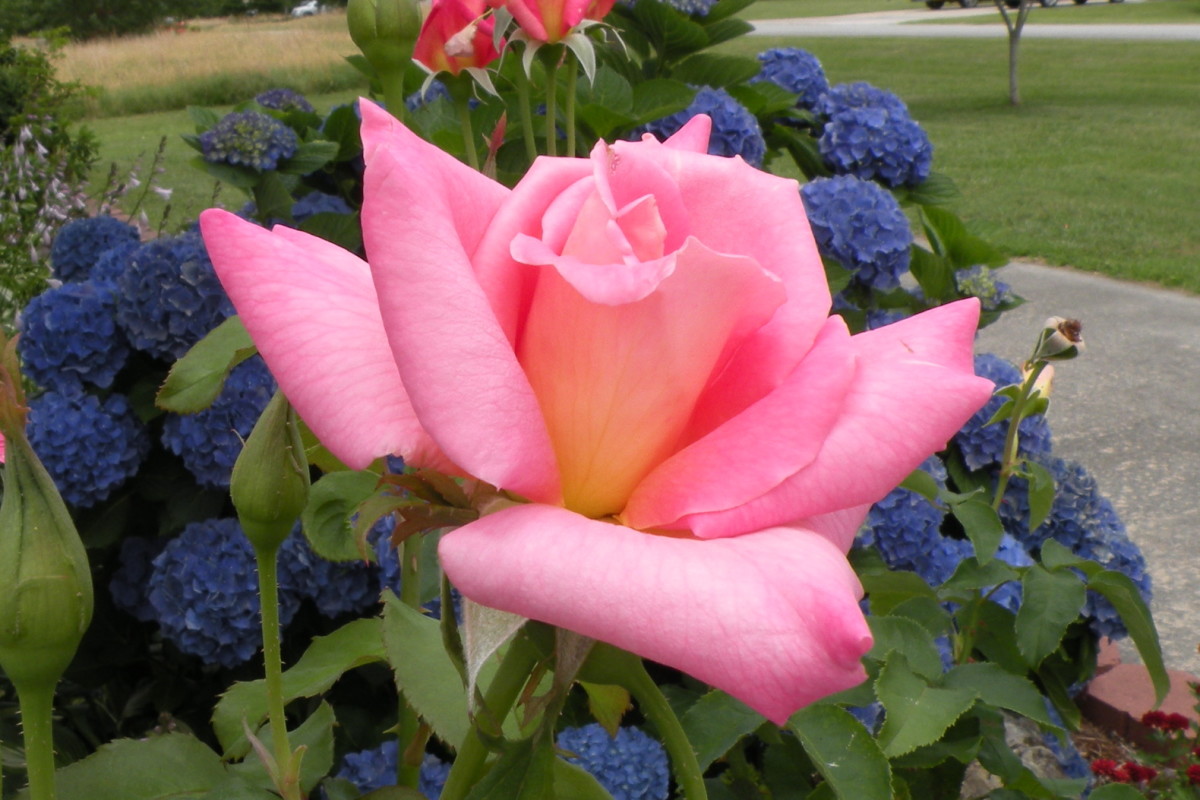Gardening in the Desert
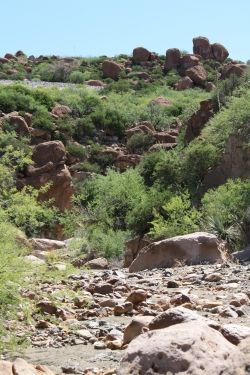
Gardening in the Desert Foothills of Arizona
Do you live in the desert? There are many different challenges to gardening in the desert and not all desert areas are created equal. I live in what we call the 'foothills' in Arizona. That is I am a little higher in elevation than the flat desert areas around Phoenix and Tucson. (about 3,300 feet here). My garden experiences some severe climate patterns, depending on the season and even what year it is.
My garden may get snow or hail any time from Thanksgiving until almost Memorial Day. It may go 4 months without a drop of rain and then get several inches in less than two hours. It might be 80 degrees today and below freezing tomorrow night. The native 'soil' (ha ha) in my yard ranges from sand and gravel to cement like caliche clay. Some things of course we have no control over, but we can be proactive in our gardening approaches to minimize the worst that Mother Nature throws at us.
Photo copyright Mary Hysong 2010, taken in Globe, Arizona
Do you live in a Desert? Please take the poll, then in your comment tell us where you live!
Do You Live in a Desert?
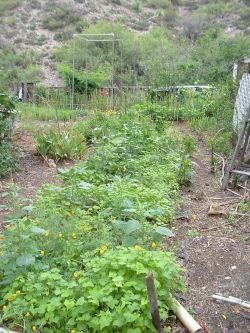
Beginner Basics
Location
Here are some basic areas to think about when planning to garden in the desert, whether you grow ornamentals or if you grow your own food and herbs.
Location can make or break it. Because of the fierce summer heat it is often a good idea to locate your garden where your house or a tree will give a little shade from the hottest afternoon sun. If that is out of the question you can rig up some shade cloth on a frame to help keep the tenderest plants alive through July and August. Of course, that is more time and work than some of us want to put in.
Photo copyright Mary Hysong 2009 My front garden, May 23, 2009
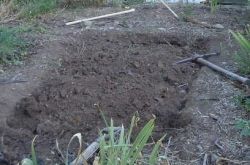
Soil
The next most important thing to think about is the soil. Most desert soils are severely imbalanced. Plants need three major nutrients, Nitrogen, Phosphorous and Potash, along with a host of other minerals. Desert soils tend to have no nitrogen. Their phosphorous and potash contents will be either very high or very low.
My own soil tests show zero nitrogen, zero potash and phosphorous so high it's off the chart. This means that to be able to grow leafy greens, which need a lot of nitrogen, I have to add that to the soil. It means I can't grow carrots or potatoes unless I add a lot of potash, because root vegetables need a lot of potash. It also explains why tomatoes, peppers and squash usually grow well along with beans of all kinds: none of these vegetables need high amounts of nitrogen or potash.
I often use a foliar spray (that is a spray of dilute plant food sprayed on the plants leaves) to help combat nutrient deficiencies during the growing season. I use a combination of seaweed extract and fish emulsion. The seaweed is for trace elements and the fish emulsion is for a little extra nitrogen, phosphorous and potash. The biggest problem, especially when the weather is really cold or really hot is that iron and nitrogen get tied up in the soil in a form the plants cannot use. The foliar feeding, done in very early morning just as the sun is coming up, is usable by the plant immediately. It's actually pretty cool to watch a really yellow plant begin turning green right before your eyes. When necessary, especially on new ground that is not in really good shape yet, I will spray once a week until the plants seem to be doing better.
Take care with foliar feeds and follow the dilution instructions on the packaging. Also, you never want to spray when the temperature is over about 80 degrees, as that can cause burning of the leaves. A too strong concentration of spray can also burn leaves. I use a 2.5 gallon hand spray rig that you pressurize by pumping the handle up. Then it will spray a very fine spray of the solution. (This rig is often used for spraying bug spray and herbicides.) Be sure that no pesticides or any other chemicals have ever been sprayed with your sprayer as the residue from these could kill your plants. Label your sprayer with the contents if you have children or others that might play with it.
Photo copyright Mary Hysong 2004, digging a new garden bed
Neptune's Harvest is a great blend of fish and seaweed for your garden.
Water
Water of course is very important in the desert. If you live in the Phoenix area you might be fortunate enough to be within the Salt River Project's irrigation district. If you live elsewhere, you should give a little thought to the sort of garden you want based on how much you can afford to pay for the water to support it. You might decide to opt for a totally desert landscape that can get along on just natural rain fall. Perhaps you will decide that you don't care how high the water bill gets, you are going to grow all of your own food and have a jungle out back. Or you might take a middle of the road approach, with desert landscaping in the hottest and sunniest part of your yard and a small food garden where the micro climate is more moderate.
While thinking about the landscaping and possible garden sites, check out where your hose bibs are. If there isn't one handy to the garden site you might want to run a line and add one to make it more convenient come summer time. You might also want to read up on drip irrigation and design your garden to take advantage of the various sorts of drip hoses and sprinklers available. You can even put these on automatic timers to lessen your never ending to do list.
Mulching of course is a great water saver, also close planting in garden beds instead of long solitary rows. Planting plants on a hexagonal pattern instead of in rows means that the plants themselves are shading most of the soil by the time they mature, thus keeping the soil moister and preventing evaporation. You can also mulch as you set plants out or after they have grown a little if you are planting seeds directly in the garden bed.
Mulch can be any light, fine material, preferably one that does not pack down and that allows water to pass through easily. Old straw or hay is one of my favorites. To really stop a lot of weed growth you can use several layers of newspaper or cardboard underneath it. I tried shredded paper once. Unfortunately after it got really wet and then dried out it became a little like paper mache and water could not easily get through it at that point. Now all my shredded paper goes into the worm box where it will stay damp until broken down. I might use it again with drip tubing underneath of it. Also it would work well on path ways.
Other Things To Consider
There are many other things to consider and learn about as you begin gardening. Just be a bit wary of the average garden book which is written for other areas of the country. The soil and climate of the desert is so different from a humid area, it's like they are on different planets. Following advice written for the Eastern or Northern United States in the desert Southwest is usually disastrous.
One of the best places to get gardening information, like soil types and specially adapted varieties of plants is from the United States Dept. of Agriculture's Extension office. Every county has this service. If your county is not a big agricultural area then your local office may be small and it may not be manned on a daily basis. You can locate your local office through this website: USDA Extension Services
If you live in Arizona, the State Agriculture Extension office has digitized it's Master Gardener Manual and put it online. You can find it here: Master Gardeners Manual
Because I believe in doing things organically I ignore the chemical fertilizer and pesticide recommendations and substitute organic methods as needed.
Gardening Books I Recommend for Beginners in the Southwest
Even if you are an experienced gardener moving here from another part of the country you will discover that gardening in the Southwest is a whole different animal. Our seasons, planting schedules and varieties are all very different from what you are used to. You must also realize that gardening 'on the flat', that is the low desert such as the Phoenix area is different than gardening here in the 'foothills' or higher up in the 'High Desert'. So here are some books that can help you grow as good a garden in the desert as you did at your last residence. (Maybe even better!)



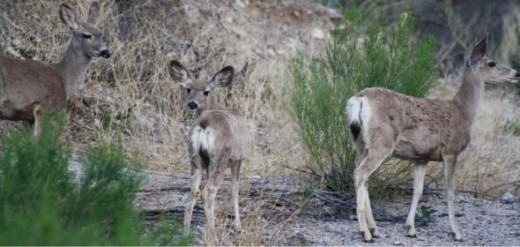
Deer are probably the biggest and actually the least troublesome critters I have to contend with.
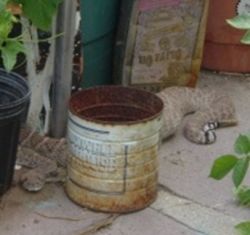
Did I Mention The Wild Life?
Here in the desert we have all sorts of wild life, some are not too bothersome, but others can be very destructive. And we have a lot of critters that bite! I have had javalina (also known as collared peccaries) eat even the tomato plants to the ground. Lately a few deer have been hanging around browsing on the apple trees. A couple of years ago there was a rattlesnake on the patio. At night you can hear the owls hoot and the coyotes howl.
Then again there are scorpions, centipedes, and black widow spiders hiding in dark corners and weedy spots. We even have our own version of the brown recluse spider. As if these aren't enough there are the usual bees and wasps.
Other animals that can be destructive in the garden are a full array of birds, they are always after something; fruit, seedlings, seeds. And of course there are the ones that eat bugs and scratch every thing up looking for a tasty morsel. As if they aren't enough we have jack rabbits and cotton tails, squirrels and chipmunks, wood rats, pack rats and plenty of other things to deal with.
So a sturdy fence, at least 5 feet high and with at least 6-12 inches buried in the ground is pretty much a necessity. That will stop the javalina and the rabbits, but it won't deter the birds or squirrels.
I saw an article once where the people were so frustrated they actually built a room around their garden. They built a wooden frame as if for a fence but made it 7 or 8 feet high, with horizontal supports on top. Then covered it all with heavy wire mesh. While expensive it did stop most of the animal problems.
Just forget that flimsy plastic fence netting they sell at the garden store. You need a real honest to goodness weld wire fence with sturdy posts and a gate wide enough to get a wheelbarrow through. You can always protect individual planting areas with small frames covered with small wire mesh to keep out birds and rabbits until the plants are big enough to hold their own from the occasional nibble.
I love to read your comments. Tell me what you like or don't like about this lens. Do you garden in the desert foothills? What subjects would most interest you in this category?






